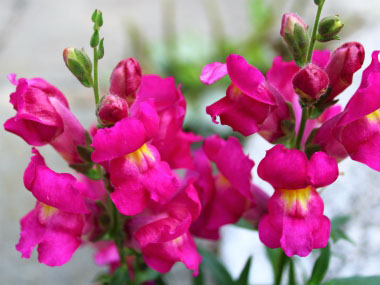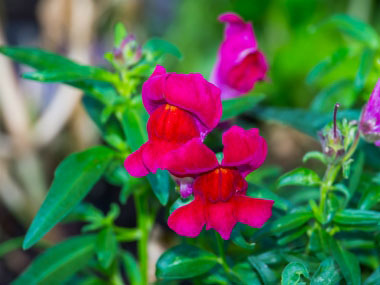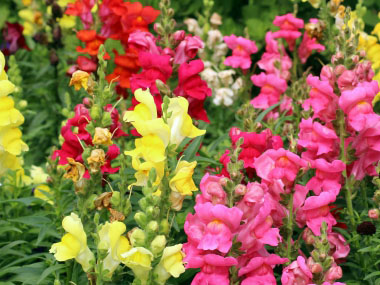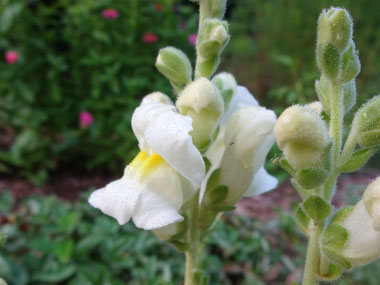





To support our efforts please browse our store (books with health benefits, etc.).
The snapdragon is an old garden favourites that, in optimum cool summer growing conditions, will flower well from spring to autumn. In climates with protracted hot summer weather, plants often tend to languish and may not last the entire growing season. The common name is in reference to the dragon-shaped, tubular, two-lipped, closed flowers that appear in terminal racemes. Snapdragons can taste bland to bitter depending on type, colour, and soil conditions. Although edible, adding only a few in a salad is best.
 Fields
of Nutrition has medicinal benefits and vitamin/mineral content of Snapdragon.
Fields
of Nutrition has medicinal benefits and vitamin/mineral content of Snapdragon.
Seed Life Cycle
Annual.
Colours
Snapdragons occur in a beautiful spectrum of red, yellow, pink, and white flowers.
Height
30cm to 1m (1" to 3").
Health Benefits
According to Plants for a Future, the leaves and flowers are antiphlogistic, bitter, resolvent and a stimulant. They have been used in poultices on tumours and ulcers. It is effective in the treatment of all kinds of inflammation and is also used on haemorrhoids. Snapdragons are harvested in the summer when in flower and is dried for later use.
Dye
The flowers produce a green dye without a mordant. Dark green and gold can also be obtained if a mordant is used.
Winter Survival Food Handbook

PDF Plant Magazines
Types of Wild Food
Geographic Zones Seasons
Disclaimer
EdibleWildFood.com is informational in nature. While we strive to be 100% accurate, it is solely up to the reader to ensure proper plant identification. Some wild plants are poisonous or can have serious adverse health effects.
We are not health professionals, medical doctors, nor are we nutritionists. It is up to the reader to verify nutritional information and health benefits with qualified professionals for all edible plants listed in this web site. Please click here for more information.
Why Edible Wild Food?
- Food costs are rising
- Free, wild food is readily abundant
- Wild food adds nutrition to your diet
- Wild food can help treat various medical conditions





